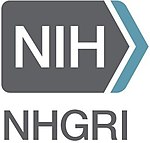National Institutes of Health Clinical Center

The NIH Clinical Center is a hospital solely dedicated to clinical research at the National Institutes of Health campus in Bethesda, Maryland. The Clinical Center, known as Building 10, consists of the original part of the hospital, the Warren Grant Magnuson Clinical Center, and the newest addition, the Mark O. Hatfield Clinical Research Center. The two parts are connected to form one large building.Since the hospital's opening in 1953, NIH scientists have worked with volunteer patients to create medical innovations. Clinical Center successes include pioneering the cure of cancerous solid tumors with chemotherapy; the use of nitroglycerin to treat heart attacks; identifying a genetic component in schizophrenia; conducting the first successful replacement of a mitral valve to treat heart disease; and the creation of blood tests to identify both Acquired Immune Deficiency Syndrome (AIDS) and hepatitis.In October 2014, Clinical Center staff successfully treated one of the first few Ebola virus cases in the United States. The Clinical Center has been a leader in the “bench-to-bedside” concept. Its specialized hospital design places patient care units in close proximity to research laboratories. This model supports interaction and collaboration among clinical researchers. The Clinical Center also provides training opportunities for students, new and mid-career professionals. A Summer Internship Program offers internships to students who are currently enrolled in high school, college, graduate programs and health professional schools such as nursing or medicine. The Medical Research Scholars Program is a year-long research enrichment program designed for research-oriented medical, dental and veterinary students. The Clinical Research Management Sabbatical is a self-directed educational experience designed for clinical research investigators and managers of clinical research programs. The Clinical Center also provides a course called the Introduction to the Principles and Practice of Clinical Research to train physicians, scientists, medical students, nurses and other health professionals how to effectively conduct clinical research.
Excerpt from the Wikipedia article National Institutes of Health Clinical Center (License: CC BY-SA 3.0, Authors, Images).National Institutes of Health Clinical Center
Center Drive, Bethesda
Geographical coordinates (GPS) Address Nearby Places Show on map
Geographical coordinates (GPS)
| Latitude | Longitude |
|---|---|
| N 39.001666666667 ° | E -77.104444444444 ° |
Address
NIH Clinical Center
Center Drive 10
20892 Bethesda
Maryland, United States
Open on Google Maps







